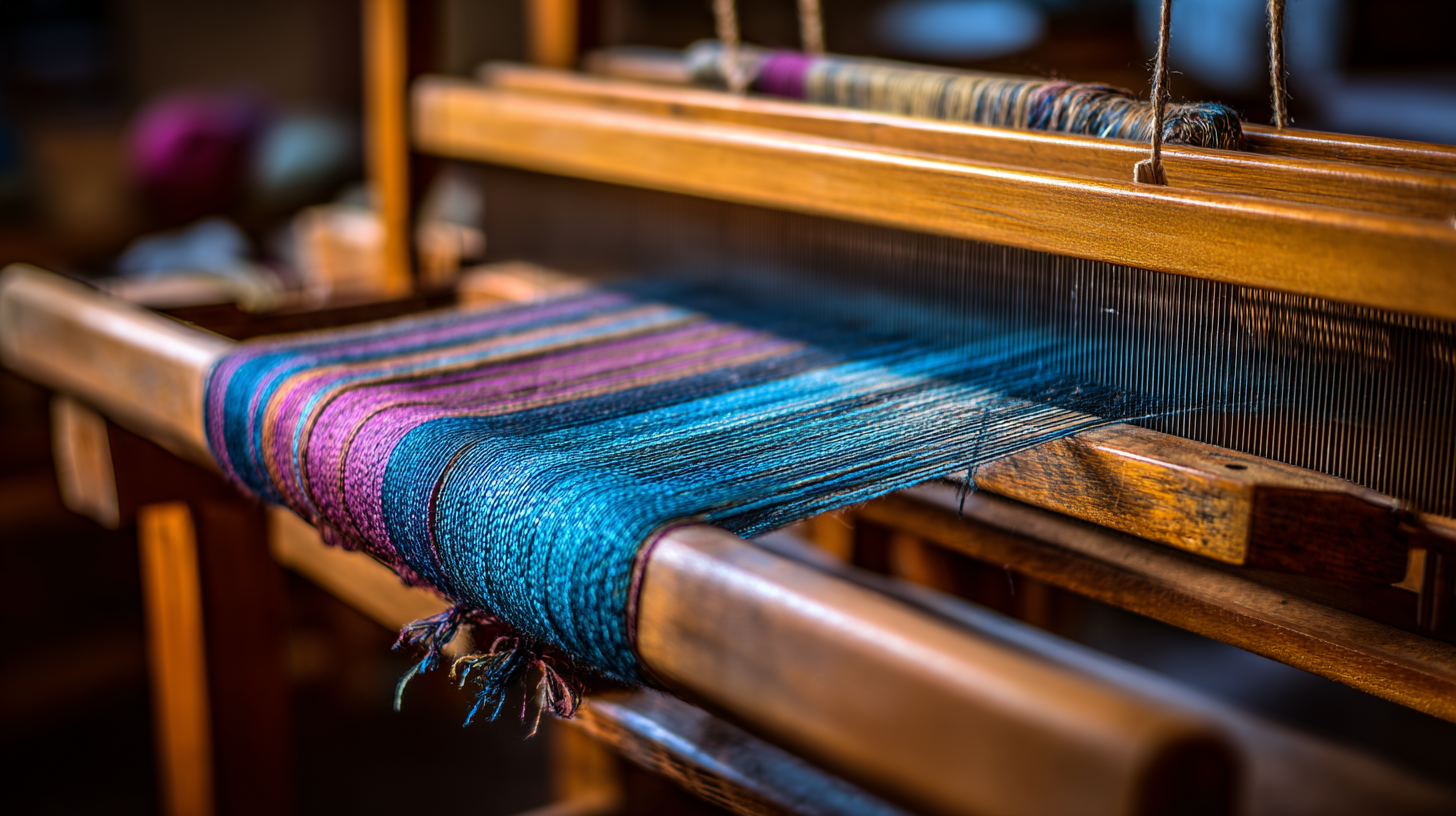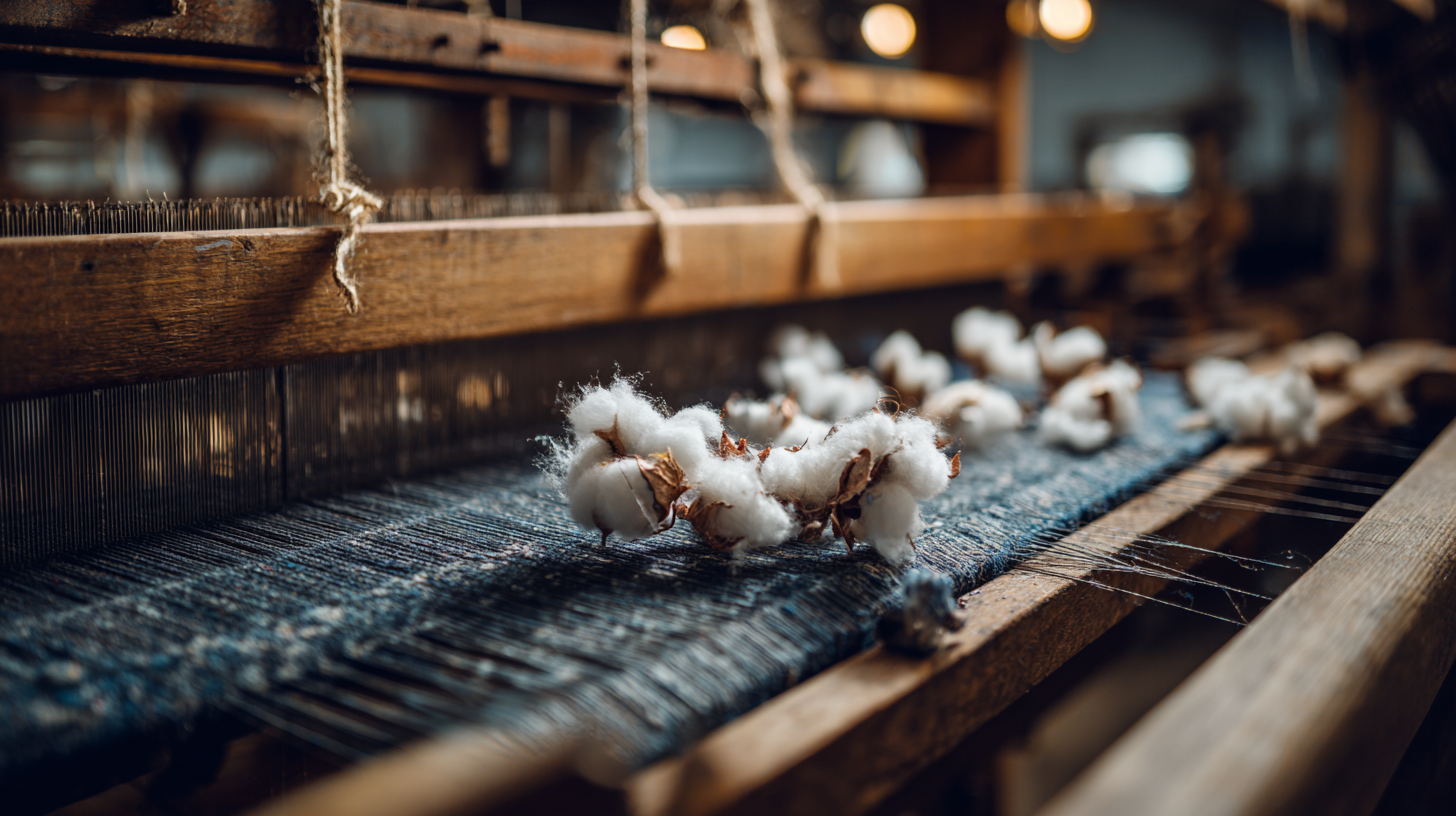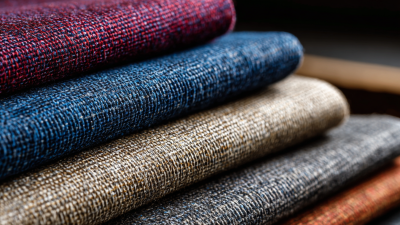Top 10 Best Wool Looms for Crafting Stunning Projects at Home
In recent years, the crafting industry has witnessed a remarkable resurgence, with consumers increasingly drawn to DIY projects that allow for personal expression and creativity. According to a report by the Craft and Hobby Association, crafting contributes approximately $40 billion to the U.S. economy, reflecting a growing trend among individuals seeking unique handmade items. One of the most versatile tools in the crafting realm is the wool loom, a device that enables artisans to create intricate textiles, ranging from scarves to home décor pieces.

The wool loom not only enhances creativity but also offers a more accessible entry point for both novice and experienced crafters. As of 2022, 45% of millennials reported engaging in crafting activities, particularly those involving yarn and fabric, highlighting the popularity of wool looms as a means to produce personalized creations. With a wide array of options available on the market, choosing the right wool loom is essential for achieving stunning results in your projects. In this article, we explore the top 10 best wool looms, each selected for their quality, ease of use, and the variety of projects they can facilitate.
Best Wool Looms for Beginners: A Guide to Getting Started
For beginners eager to dive into the world of crafting with wool looms, choosing the right tools is crucial for a successful start. Wool looms come in various types and sizes, each designed to cater to specific projects. A simple frame loom is often recommended for those just starting out, as they are user-friendly and versatile. These looms allow crafters to create everything from scarves to blankets without the overwhelming complexity of more advanced looms.
When selecting the best wool loom for beginners, look for options that include clear instructions and beginner-friendly features. Many looms offer peg configurations that help guide the weaving process, making it easier to achieve even tension and neat edges. Additionally, consider looms that are portable and lightweight, ensuring that you can take your crafting on the road. With the right loom in hand, beginner crafters can unleash their creativity and enjoy the therapeutic benefits of weaving with wool.
Top 10 Best Wool Looms for Crafting Stunning Projects at Home
Top Features to Look for in Quality Wool Looms
 When selecting a quality wool loom, there are several key features to consider that can greatly enhance your crafting experience. First and foremost, the material of the loom plays a crucial role in its durability and performance. Look for looms made from sturdy, high-quality wood or reinforced plastic, which can withstand the tension of weaving and provide a smooth surface for your projects. Additionally, the design of the loom should allow for easy adjustments, enabling you to work with various yarn thicknesses and patterns without hassle.
When selecting a quality wool loom, there are several key features to consider that can greatly enhance your crafting experience. First and foremost, the material of the loom plays a crucial role in its durability and performance. Look for looms made from sturdy, high-quality wood or reinforced plastic, which can withstand the tension of weaving and provide a smooth surface for your projects. Additionally, the design of the loom should allow for easy adjustments, enabling you to work with various yarn thicknesses and patterns without hassle.
Another important feature to consider is the size of the loom. Depending on the scope of your projects, you might prefer a larger loom for bigger items like blankets or a smaller, portable one for smaller crafts. Ease of assembly and storage is also vital—models that can be easily disassembled or compacted are ideal for crafters with limited workspace. Finally, explore looms that come with a good selection of accessories, such as hooks, shuttles, and pattern guides, as these can significantly enrich your crafting capabilities and inspire creativity.
Creative Project Ideas to Try with Your Wool Loom
Exploring the creative potential of wool looms can lead to countless innovative projects right in your home. For instance, you could consider weaving personalized wall hangings that showcase your unique style or create functional yet artistic items such as bags or coasters. The tactile nature of wool lends itself well to crafting, making it an excellent choice for projects that require both aesthetics and practicality. Try combining weaving with other crafts, like incorporating recycled materials to add an environmental touch, reminiscent of recent community weaving projects that emphasize sustainability and collective effort.
In addition to traditional weaving, there are myriad ways to push the boundaries of your creativity. Contemporary artists illustrate how weaving can address complex themes such as migration and identity, inspiring crafters to infuse personal narratives into their work. Consider creating pieces that reflect your experiences or connect you with stories from different cultures. Whether you're exploring unconventional materials or focusing on a specific theme, using a wool loom will provide a versatile platform for self-expression and artistic exploration, transforming simple fibers into meaningful art.
Maximizing Your Wool Loom: Tips for Efficient Weaving
When maximizing your wool loom for efficient weaving, understanding the nuances of your chosen loom can significantly enhance your crafting experience. A study by the Craft Yarn Council indicates that the use of appropriate loom settings can lead to a 30% increase in weaving speed, allowing crafters to complete projects more quickly without sacrificing quality. Whether you are a novice or a seasoned weaver, familiarizing yourself with your loom’s features—such as tension adjustments and threading techniques—can drastically improve your output.
Additionally, organizing your workspace can play a pivotal role in efficiency. According to the American Craft Council, a clutter-free and well-arranged area can increase productivity by up to 25%. Utilize baskets for yarn storage and keep essential tools within arm's reach. Incorporating time management strategies, such as setting specific weaving goals for each session, can also help maintain focus and prevent burnout. By implementing these tips, you'll find yourself creating stunning wool projects in less time and with greater satisfaction.
Maintenance Tips to Keep Your Wool Loom in Perfect Condition
Maintaining your wool loom is essential to ensure it remains in perfect condition for all your crafting projects. Regular cleaning and storage practices can significantly extend the life of your loom. Experts suggest that after every use, it’s crucial to remove any wool remnants and dust. A simple brush or a damp cloth will suffice for routine maintenance. Additionally, experts recommend keeping the loom in a dry environment to prevent moisture-related damage, which can warp the wood.
When it comes to deep cleaning, many artisans turn to techniques similar to those used in caring for fine woolen garments. According to industry statistics, wool can last a lifetime when maintained correctly, reflecting its inherent durability and resilience. By washing less frequently and focusing on mending visible wear, crafters can preserve the quality of their wool projects. Plus, a well-maintained loom encourages creativity, with reports showing that crafters who care for their tools report a 30% increase in project satisfaction, leading to more ambitious design pursuits. Proper upkeep not only enhances performance but also ensures your loom looks as good as new, ready for the next stunning project.




